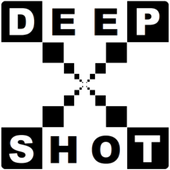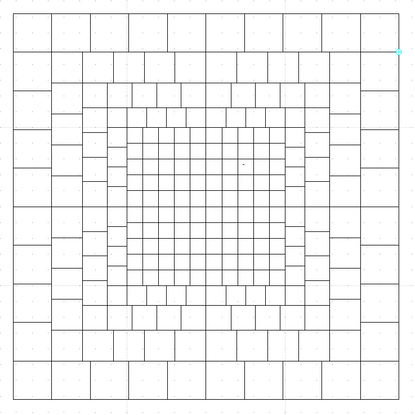Make photos, change zoom and combine them into one incredibly deep file, a Deep-Shot!
A wide angle and a deep zoom got merged - for the first time!
About
When looking at a photography, one will notice, that it covers either a wide shooting angle or great detail, depending on the degree of zoom the photographer decided to use. When dealing with a high degree of zoom, the viewer may wonder about whats beneath that little sector of a certain situation. When dealing with wide angles, the viewer may want to know more about some scenes taking place in the background. Most of the photos taken in todays life will never be printed, meaning they will only be viewed digitally. So wouldn’t it be a great idea to combine both of these features?
*The headline image is just for presentational purposes. A useful Deep-Shot should be higher resoluted, single pixels shouldn't be visible.
That is what I decided to do when designing the so called Deep-Shot Converter. Deep Shots are images with a high resoluted center and growing pixels when moving away from that point. At first the photos are taken while changing the degree of zoom or the distance to the object. The process of conversion then starts with taking the colour values from these photographs. These information are then stitched and stored into a special net structure, which is point-based and staggered from the inside to the outside. It is an exponentially growing new kind of pixel-grid. The result is a coloured net which is then saved into a vector image file type. This not only combines wide shooting angles and deep zoom, another advantage is the reduction of storage space. The transition between sectors of high and those of low resolution are smooth.
The results of this conversion can be viewed inside the program, they also can be zoomed (that's what it's all about). Also there shall be the possibility to display them on websites using a custom web-viewer. As these pictures consume an incredible small amount of memory, they are dedicated to fit web-pages, that should buffer fast to get good ranks in SEO.
So who has an advantage in using this principle? Well, obviously the effect empowers situations with objects of interest in the foreground, as well as stuff that’s deep hidden somewhere in the background. The deeper a detail is hidden inside a panorama, the more useful the principal of creating Deep-Shots becomes. When viewing them for example inside online galleries, the zoom will ignore the borders of the image and automatically enlarge the center, containing the detail that the picture is about. But defining details inside a panorama isn’t the only way of using the converter. The user can load map material covering a large area and place the focus on a sudden location inside it. All unnecessary information about subjects beneath that location are thrown out. You will only find that sudden scene and get informed about where it is located. This again results in a small memory consumption.
The grid
Let’s take a look at that exponential pixel grid that the resulting files consist of. There is always a square center, consisting out of several smaller pixels, this is the most detailed area. When moving away from that center, the pixels will grow exponentially. This follows clearly defined principles: Each new row that is surrounding the center contains the same amount of squares/pixels as the row before, making them grow automatically. That results in a constant resolution, no matter how much the file is zoomed. This is the most effective way of dealing with this issue - only necessary information is being stored.
The converter is still in development stage, however it can deal with pretty big data. When loading a high amount of images into the program, the converted files can get pretty deep. They could probably cover a 10‘000-times zoom. Following the logic of such a conversion, the memory consumed will not grow exponentially, meaning a 10‘000-times zoomed image will only consume about the double compared to a 100-times zoomed Deep-Shot.
So what do we have here? Deep Shots contain wide shooting angle information, as well as deep zoomed pictures, by storing a bunch of them into an exponentially growing pixel grid. It combines, which makes the user able to feel the whole impact of a situation. It saves memory, compared to that bunch of images. And it adjusts the zoom to the point of interest, making the experience of viewing easy and straight forward.

